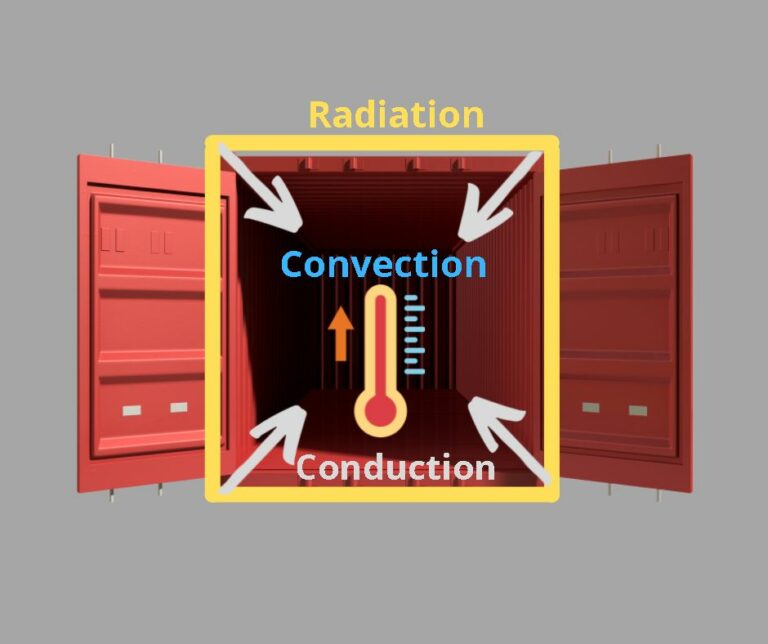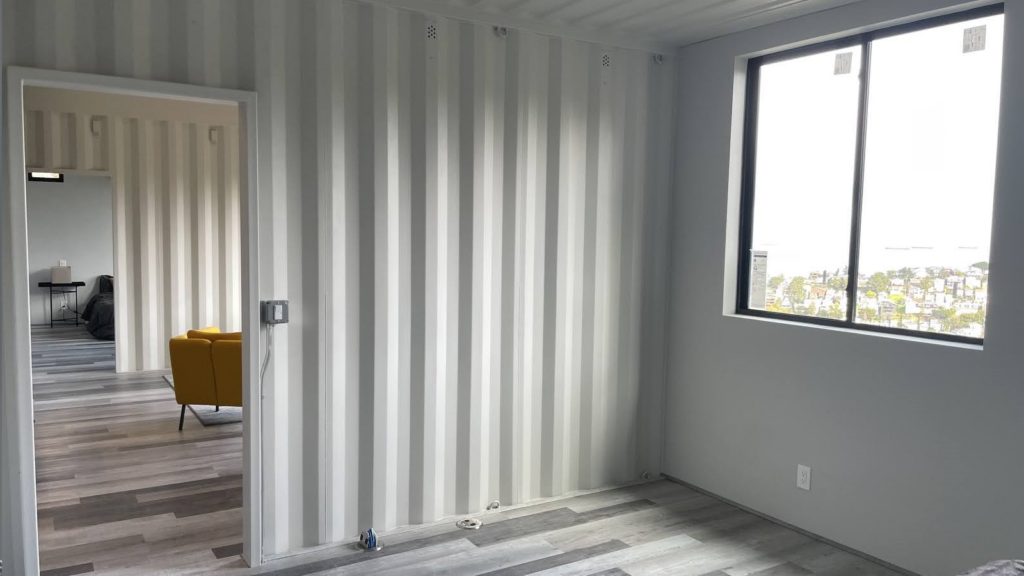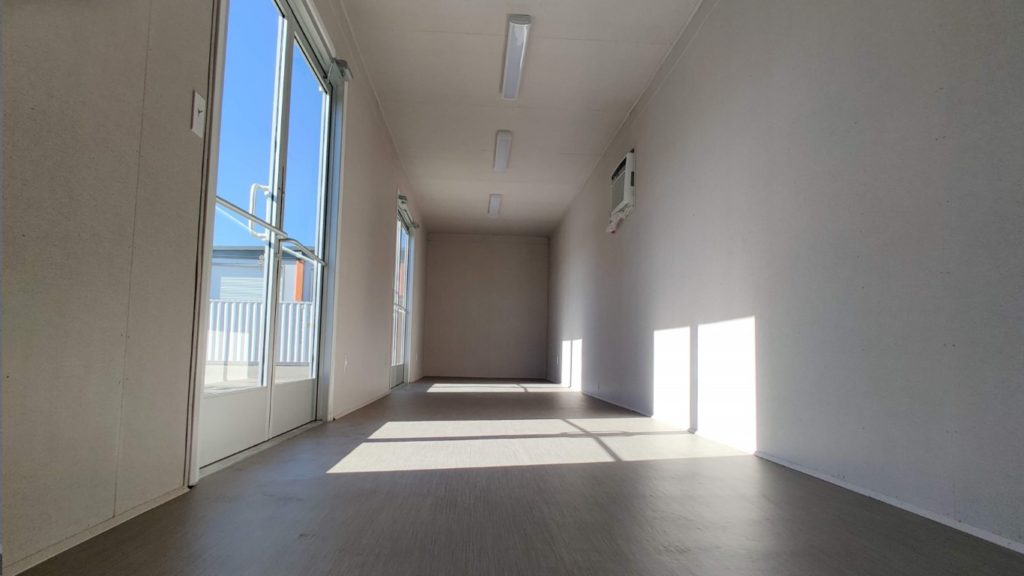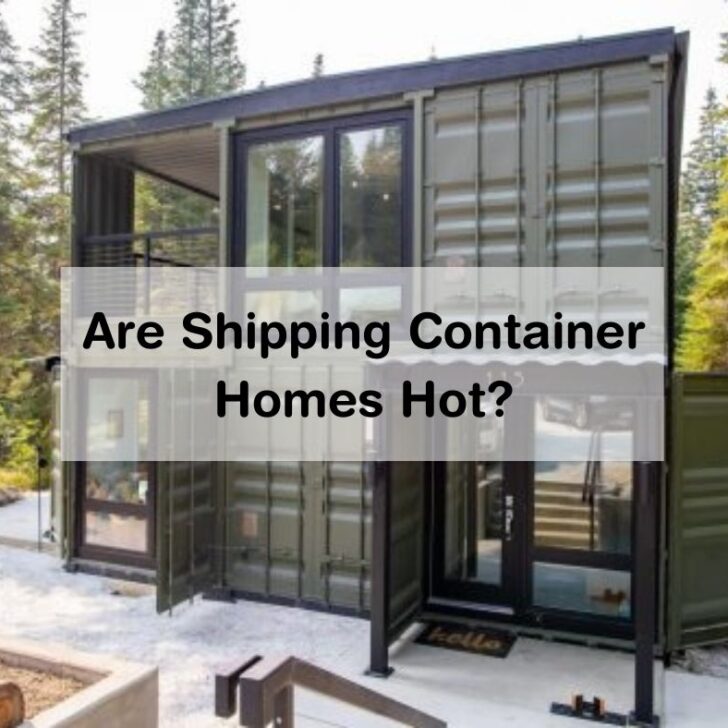Is your container home feeling a bit like a sauna? Don’t fret; we’ve got some top tips on how to keep your alternative abode chilled out.
In this article, we will delve into the reasons why shipping container homes have a tendency to heat up. We will also discuss various solutions to address this issue.
So, if you’re worried about your container home turning into a hot box, these three strategies can help you maintain a comfortable living space. Let’s get into it.

Photo from Alternative Living Spaces
Key Takeaways
- Container homes, as they’re made of metal, can get pretty warm. This is mainly due to heat radiation, conduction, and convection.
- Adding extra insulation is a simple yet powerful way to manage the temperature in your container home. Not only does this cool down your living space, but it also makes it more energy-efficient.
- A roof that can resist heat can transform your living conditions. It’s a crucial step in maintaining a cool home, even on the hottest summer days.
- Consider your ventilation systems. If you optimize these, you can significantly boost airflow. This is a great way to keep a steady, comfortable temperature in your container.
Why Do Shipping Container Homes Get Hot?
Ever wondered why shipping container houses tend to get so hot? The answer lies in some basic science.

The first culprit is heat radiation. The metal siding and roof of a container home soak up heat from the sun like a sponge.
Unlike wood, metal can’t hold onto heat for long. So, what does it do? It passes it on inside the home through a process called conduction.
Then there’s convection. This is the principle that hot air rises. So, if your container home has multiple stories, the upper levels can become uncomfortably warm.
Just like any other building, a container home can also lose its cool air through its walls and roof if they’re not properly insulated. When cool air escapes, hot air from outside replaces it, raising the temperature inside.
How to Keep Your Shipping Container Home Cool
Transforming a shipping container into a functional home is a popular and cost-effective option these days. However, just like a metal shed, these homes have a tendency to become unbearably hot during the scorching summer months.
There are some simple steps you can take to keep your container home cool and energy efficient. Let’s dive in and explore these tips.
Keeping your shipping container home cool can be a breeze if you follow three simple strategies.
- Choose the right insulation
- Install heat-resistant roofing
- Optimize the ventilation systems
Selecting the appropriate materials can effectively retain cool air indoors and prevent hot air from seeping in.
These measures not only stabilize the temperature but also reduce the need for continuous use of your air conditioning system.

Use Extra Insulation to Cool Your Container Home
Keep your container home cool through some extra insulation! Though these container homes come already insulated, a little extra goes a long way in managing indoor temperatures.
The magic of insulation lies in its ability to act as a barrier. It keeps the heat outside and traps the cool air inside.
The insulating value of a product is listed as the “R-value” per inch:
| Insulation | “R-value” per inch |
|---|---|
| Batting (standard rolls of blanket insulation) | 3.1 to 3.4 |
| Blown-in fiberglass insulation | 3.7 to 4.3 |
| Blown-in mineral wool | 3.1 to 4.0 |
| Blown-in cellulose | 3.2 to 3.9 |
| Rigid insulation boards | 3.8 to 6.5 |
| Open-cell spray foam | 3.5 to 3.6 |
| Closed-cell spray foam | 6.0 to 6.5 |
Spray foam, specifically the closed-cell type, is a star player in the insulation game. It has the highest R-value per inch, meaning it offers the best coverage. It leaves no corner of your container exposed to heat.
There’s also blown-in insulation like fiberglass or cellulose. These are good options, but they may not stand the test of time. They tend to settle over time, making them less effective at insulation.
Adding extra insulation to your container home can significantly improve its cool factor. It’s a surefire way to ensure comfort, especially in hot climates.
So, turn up the chill in your home with a little extra insulation. It’s a small step with a big impact.
Install Heat-Resistant Roofing to Reflect Heat
In the quest for a cooler shipping container home, heat-resistant roofing emerges as a game-changer. This innovative solution is designed to reflect the sun’s rays, offering a cooler interior. Let’s delve into how this works.
The sun’s powerful rays can turn your container home into a furnace, especially during the summer. Luckily, a simple change to your roof can make a big difference.
Opt for a roof with a light hue or a reflective coating. This way, more heat gets reflected, resulting in a cooler indoor temperature.
Shipping containers are primarily made of steel, a material known for absorbing and retaining heat. This is where heat-resistant roofing comes into play. It reflects the sun’s rays, preventing them from heating up your abode.
Reflective paint or metal roofing products are excellent choices. They can reflect a remarkable 70% of solar rays. Not only does this keep your home cool during the summer, but it also reduces your energy costs. It’s a win-win!
Heat-resistant roofing also extends the lifespan of your roof. It helps it withstand extreme weather conditions. This investment in your container home offers both comfort and durability.
Optimize Ventilation Systems to Improve Airflow
A well-optimized ventilation system can not only improve the airflow but also enhance the overall air quality inside your home.
If you’re looking to maximize the refreshing breeze in your container abode, here are some tips to help you optimize your ventilation system.
You can also find a detailed guide about container home ventilation here.
Windows and Doors
Start by strategically placing windows and doors in your container home. These openings act as natural air intakes and outlets, allowing fresh air to circulate freely.
Consider placing larger windows on opposite sides of the container to create cross-ventilation, drawing in fresh air from one side and expelling stale air from the other.

Ventilation Fans
Supplementing natural ventilation with fans can significantly enhance airflow. Install extractor fans in areas prone to moisture build-up, like the kitchen and bathroom, to remove excess humidity and prevent the growth of mold and mildew.
Consider installing a ceiling fan in larger living areas to circulate air effectively and maintain a comfortable temperature.
Louvered Vents
Louvered vents are an excellent addition to your container home’s ventilation system. These adjustable vents can regulate airflow by allowing you to open or close them as needed.
Natural Shade and Greenery
Utilize natural shade around your container home to prevent direct sunlight from heating up the interior. Planting trees or installing shade sails can help keep your home cool and reduce the need for excessive air conditioning.
Conclusion
While container homes can get hot due to their metal structure, there are several effective ways to keep them cool.
Insulating the container, adding ventilation options, and utilizing shading techniques are the three best ways that can help you create a comfortable living space even in hot climates.
A place where you can relax and beat the heat, all thanks to a little bit of planning and smart design.
If you want to learn more about container homes, please visit our other helpful guides here.


